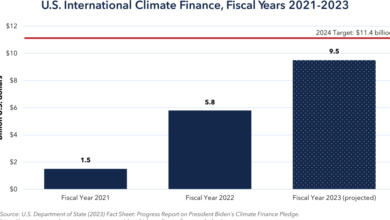Government investigating private finance options for £9bn Lower Thames Crossing

The government is considering using a private finance scheme to fund the £9bn Lower Thames Crossing, it has been reported.
According to the Financial Times, chancellor Rachel Reeves is mulling a plan that would see investors receive returns from the new road if they bankroll its construction, potentially on indefinite or 125-year contracts.
Sources told the newspaper that the model would be a new form of private finance initiative (PFI) – to deliver infrastructure while keeping debt off Whitehall’s balance sheet. However, this approach was abolished by the UK government in October 2018 due to value-for-money considerations and the difficulties caused by the collapse of PFI construction company Carillion.
The private model for Lower Thames Crossing could be similar to the regulated asset base (RAB) model used on the Thames Tideway project.
The RAB model was also introduced as an option for financing nuclear power builds under the Nuclear Energy (Financing) Act 2022.
Ofwat has also now made this type of funding – also known as direct procurement for customers (DPC) – compulsory for all water infrastructure projects over £100M.
It sees private investors who fund and build schemes paid back through higher charges on utility bills.
In the case of a road project, this could be through a higher toll charge. This is how the Silvertown Tunnel in London is being funded and delivered.
Tolling for use the proposed 4.2km tunnel under the Thames between Kent and Essex had not previously been discussed publicly.
Reeves has previously spoken of her desire to attract private investment into infrastructure and announced the creation of a National Wealth Fund in July to boost energy projects.
An HM Treasury spokesperson said it has not reversed the retirement of PFI, but added: “The government is committed to harnessing private investment and restoring growth and will work in partnership with the private sector to deliver its missions.”
The future of the Lower Thames Crossing is still unclear as the deadline for the decision on whether to grant it development consent order (DCO) was pushed back to 4 October due to the General Election.
It is also due to be considered under the government’s spending review, alongside all other major transport projects that have not yet been cancelled.
Announcing the review last month, transport secretary Louise Haigh said: “The previous administration has left a £22bn public spending gap this year alone – £2.9bn of which is unfunded transport commitments.”
She promised a “fundamental reset to how we approach capital projects”.
PFI was introduced in the mid-1990s to build roads, hospitals, schools and other buildings, with upfront costs paid for by private money. Public sector bodies then leased the buildings, paying interest and service charges as well as for the cost of construction, for a 25–30-year period.
Its use expanded greatly under the Tony Blair-led Labour Government from 1997, before eventually being scrapped in 2018 after a reduction in their use following the financial crash and after criticism about the long-term impact on public bodies paying for them.
An Infrastructure and Projects Authority analysis found more than 550 PFI contracts were still operational in summer 2021. Those schemes were worth £46bn in capital costs but would generate £244bn in total payments from the public sector to investors over their lifetimes.
WSP strategic growth lead Derek Sharkey told NCE: “Old-style PFI may have died in 2018, but partnerships between the public and private sector have and will continue to be a prominent feature of UK infrastructure projects.”
On whether the partnerships are good value for the taxpayer, he highlighted current examples such as in the water sector and the new Mutual Investment Model in Wales. The latter is similar to PFI and is being used on a handful of projects including dualling sections 5 and 6 of the A465.
He added: “What is evident, is that in a world in which investors, contractors and operators are being increasingly held to account during the operational phase, the public sector has mechanisms in place to reduce their payments burden where parties are underperforming.
“This is not forgetting the risk transfer to the private sector, particularly on megaprojects of this scale and the excellent condition in which these projects are handed back to the public sector following expiry.”
Alison Fagan, a partner at law firm DLA Piper said the prospect of private funding for the Lower Thames Crossing looked like “a very sensible solution to explore”.
She added: “It would provide a strong boost to the UK infrastructure sector and potentially signals a new approach to investors looking at the market. There isn’t a strong pipeline of this type of infrastructure work in the UK at the moment so anything the government can do to bring back investor interest into the sector can only be a good thing.”
PFI contracts that have come in for criticism include the multi-billion pound Birmingham highways contract originally held by Amey from which the contractor made a long-running and damaging attempt to withdraw.
Kier eventually took over an amended version of the package in 2020 on an interim basis. An attempt to permanently appoint the company to an 11-year deal was subject to a legal dispute between Birmingham City Council and the Department for Transport. The local authority won a judicial review over the appointment in June.
Last month, NCE’s sister title Construction News examined why there has been a sharp rise in legal disputes over existing PFI contracts in recent years.
Like what you’ve read? To receive New Civil Engineer’s daily and weekly newsletters click here.
Source link





